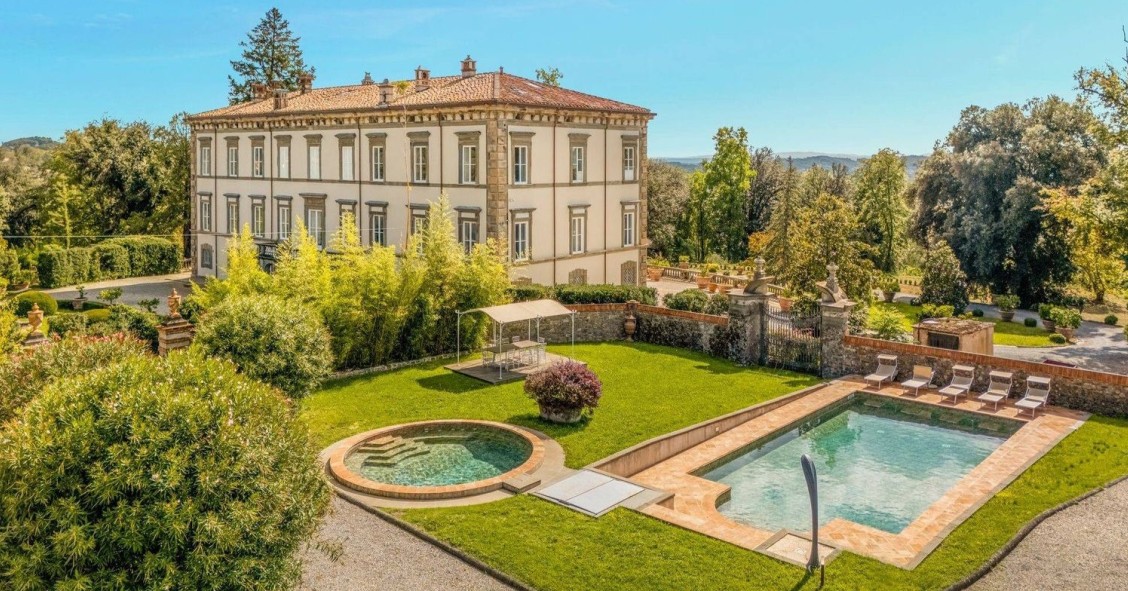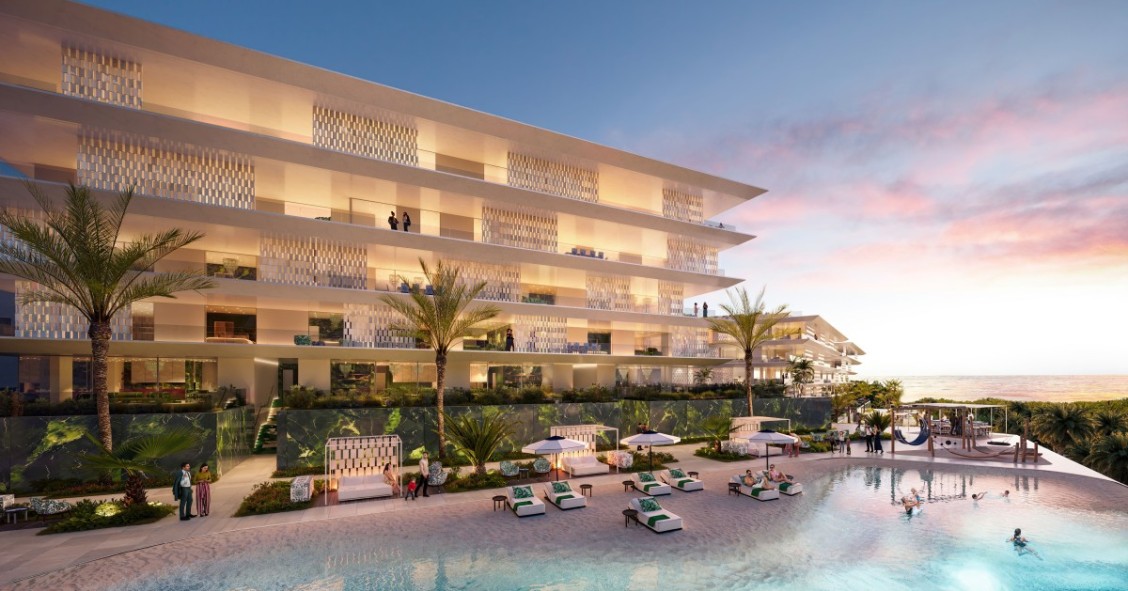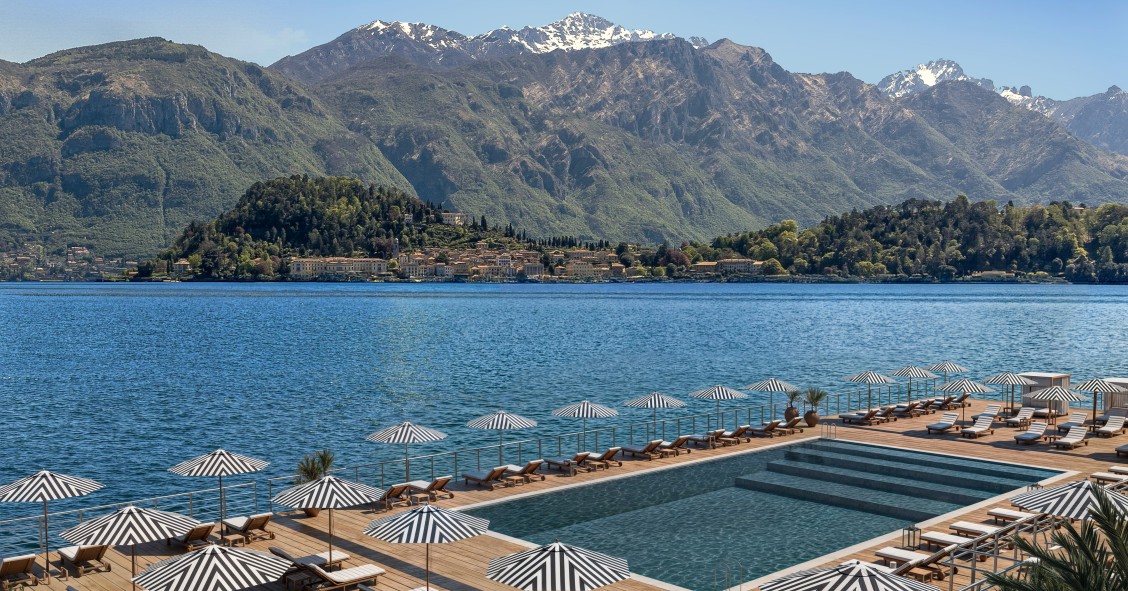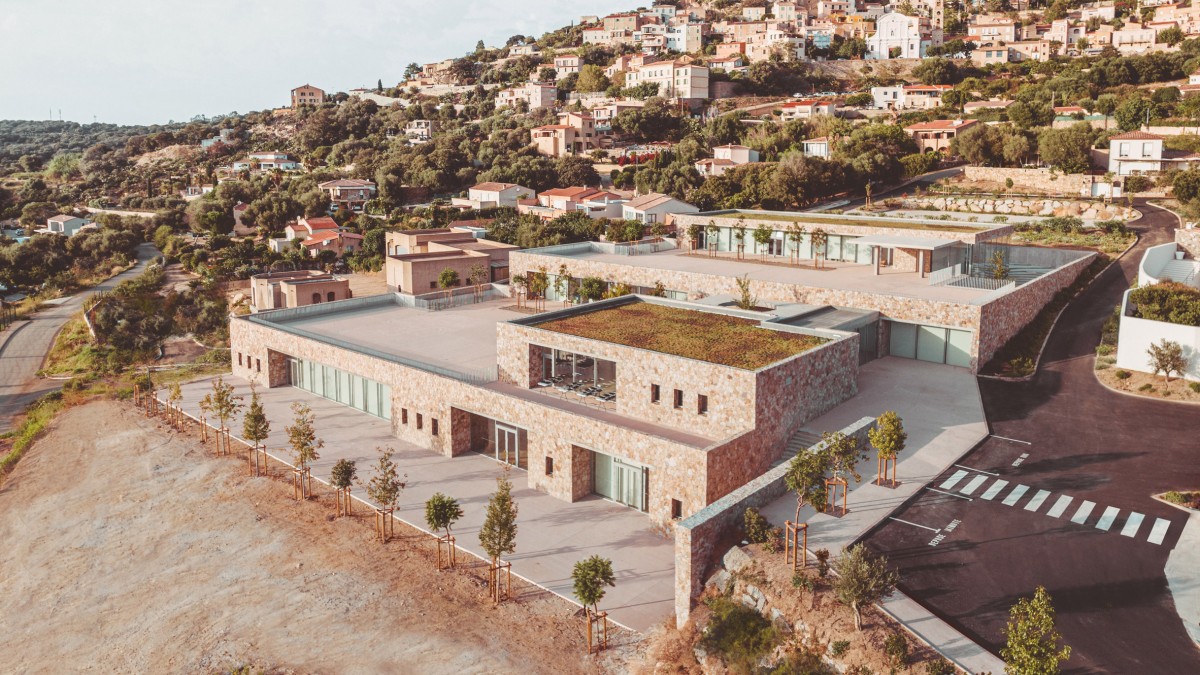
Corsica, one of the largest Mediterranean islands and located just a short distance from the Italian coast, is a true natural sanctuary. Its traditional architecture blends effortlessly with the landscape, using local materials and adapting to the natural slopes and contours of the land.
New buildings here continue this tradition, merging classic styles with the environment — like the Edmond Simeoni school and cultural centre in the village of Lumio. Designed by the French firm Amelia Tavella Architectes, the project avoids the typical school block style. Instead, it creates a unique space where granite, sea views and learning exist in harmony.
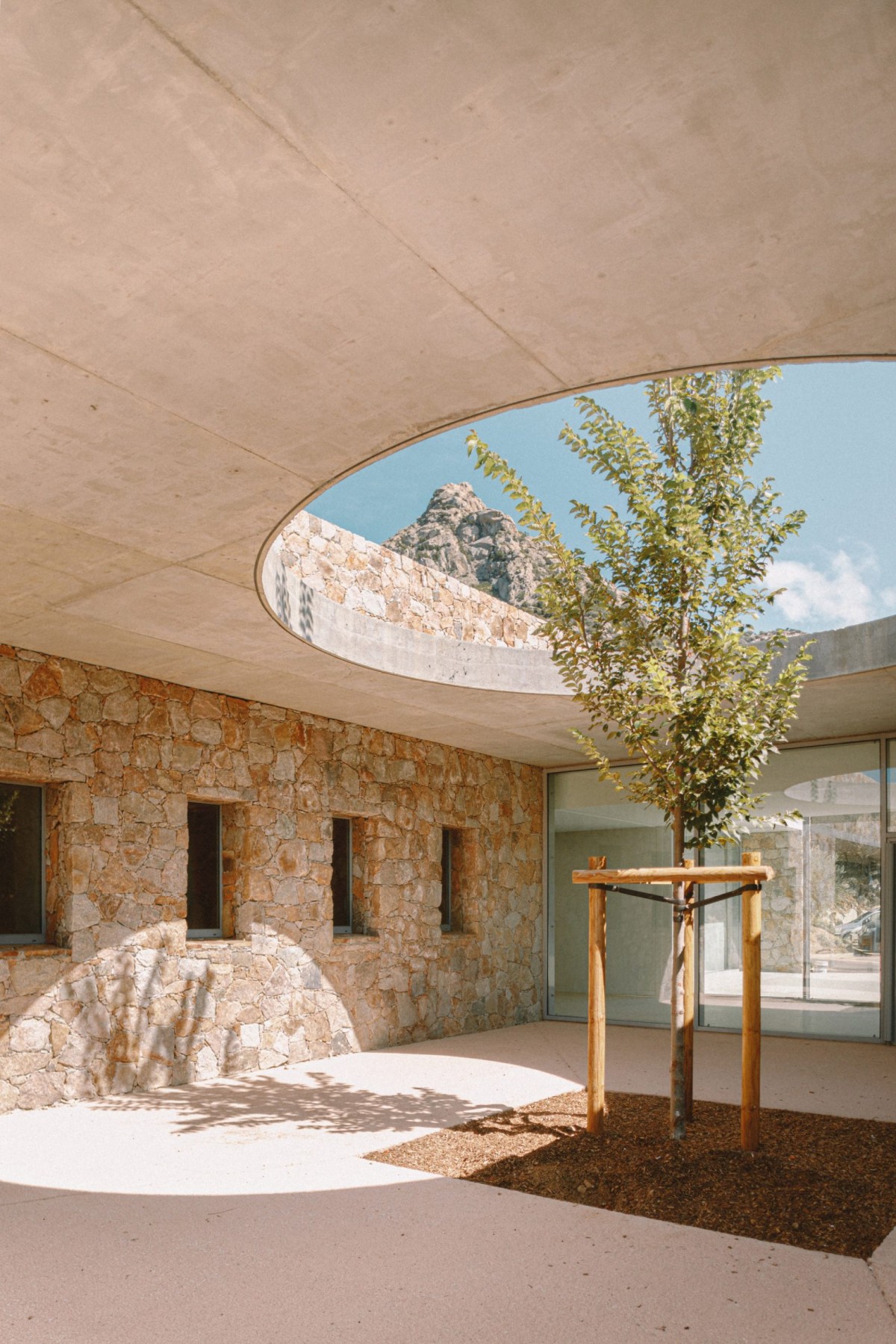
Inspired by the land
What makes Edmond Simeoni school special is how it’s designed not as a single block but as a series of rectangular volumes cascading down the hillside. Each section, clad in rough granite, seems to have grown naturally from the Corsican landscape.
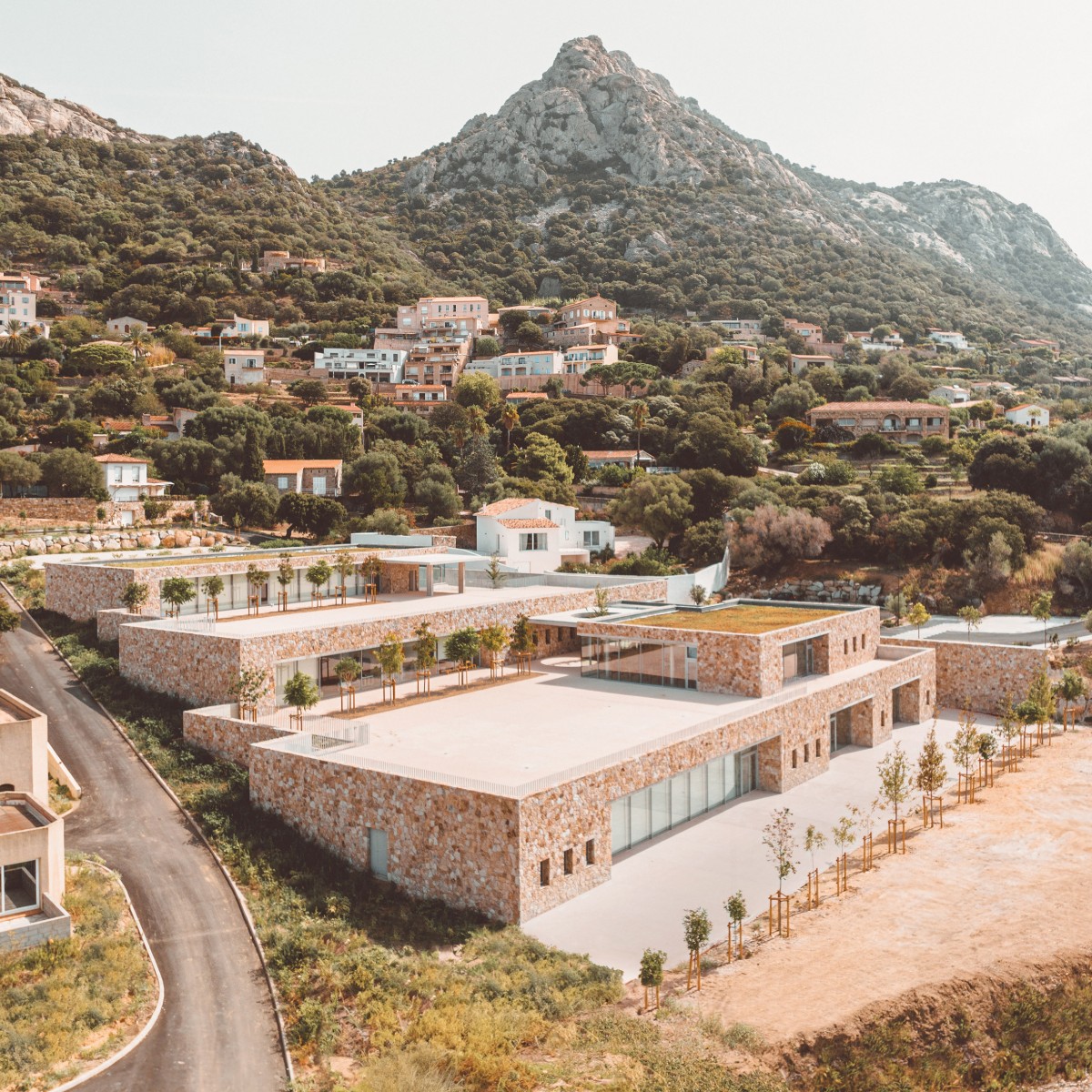
The architects explain, “Our main idea was to adapt to the rhythms, strengths and uneven edges of the site.” The goal was clear: to preserve and enhance the spirit of the location, not disrupt it.
“The design lets you move between different levels, with the roof of one building serving as the playground for the next,” they add. This layout not only fits the terrain perfectly but reflects an educational approach where learning is hands-on and connected to the environment.

Visitors enter beneath a concrete canopy pierced by a tree — a warm welcome — leading into a large central courtyard. Upstairs, primary classrooms overlook a garden framed by curved concrete steps, designed in partnership with artist Pauline Guerrier. These steps blend seamlessly into the classrooms, blurring the line between inside and outside.
Stone, education and culture
One of the project’s highlights is the consistent use of local materials, especially the rough granite covering every façade. This choice connects the building directly to Corsica’s heritage. The architects describe it as “not just practical but philosophical, recalling ancient schools where movement was part of learning.”

The 2,300-square-metre complex includes a nursery, primary school and cultural centre. All spaces are linked by concrete paths that respect the natural landform. Green roofs provide outdoor play areas, while terraces look out over the Mediterranean, extending the sense of horizon.
Designed as a space for both education and culture, the cultural centre sits below the courtyard, featuring multipurpose rooms with large windows overlooking a lower courtyard. This central position makes it a true community hub for the village of Lumio.
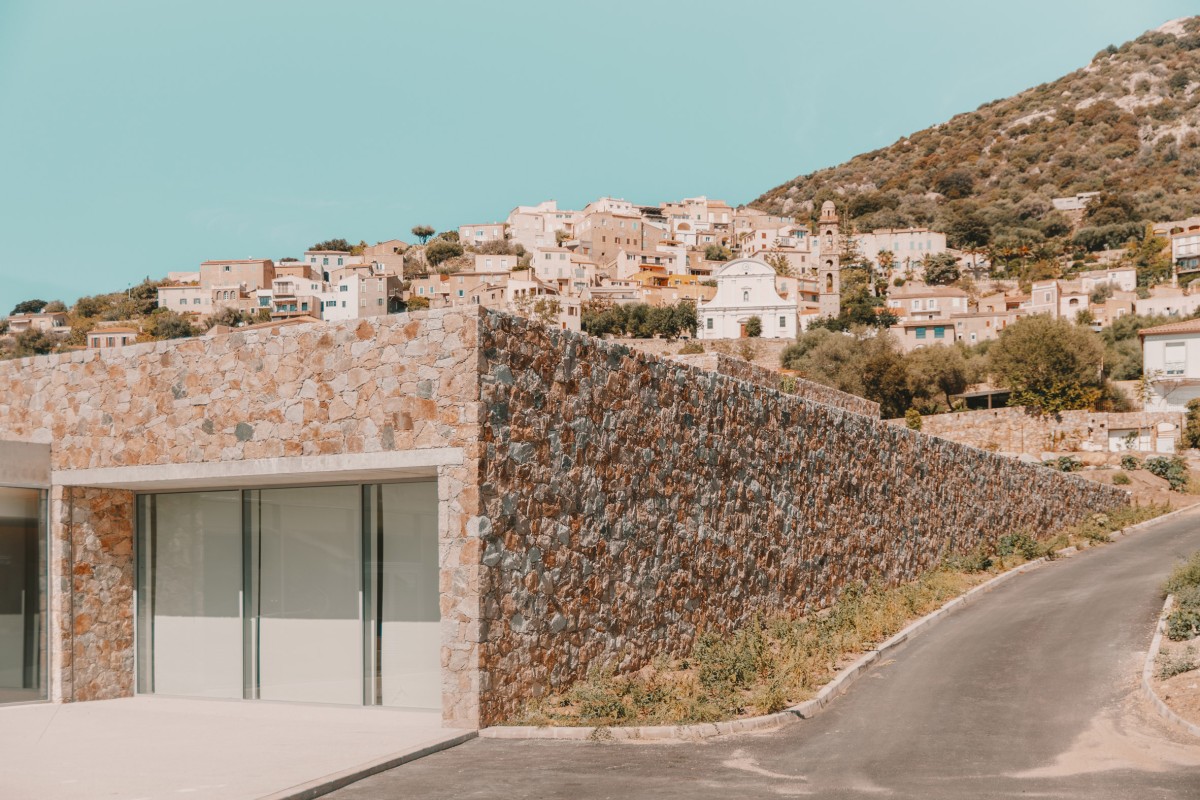
Far from imposing itself on the landscape, the school blends in and adapts — architecture that breathes with its surroundings. As the architects put it, the design “creates a place for learning and culture without compromising the land’s integrity.” And they’ve truly achieved this vision. Home, stone and school — all in perfect unity.
Functionally, the complex also prioritises privacy and sustainability. Parking is discreetly hidden behind the upper volume, out of sight. Smooth stone walls block noise from nearby roads. Green terraces, natural walkways and abundant daylight all reinforce an eco-friendly and harmonious approach.

